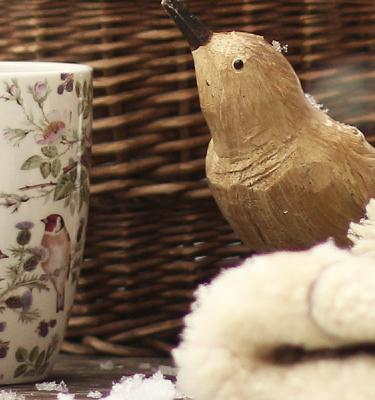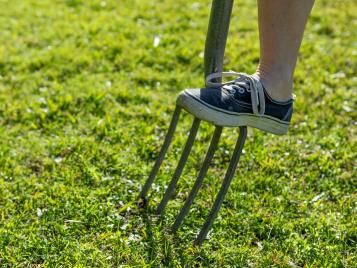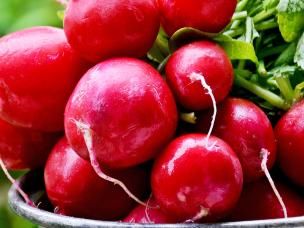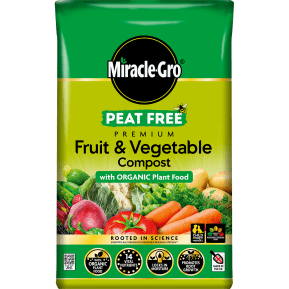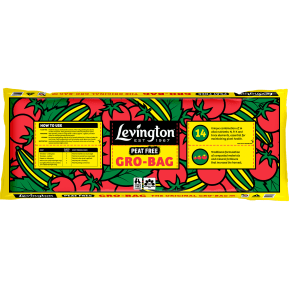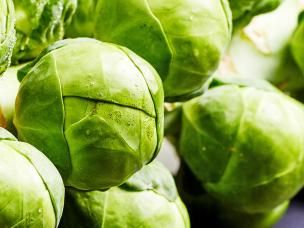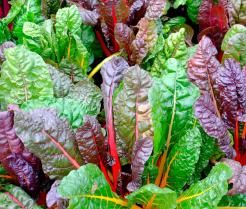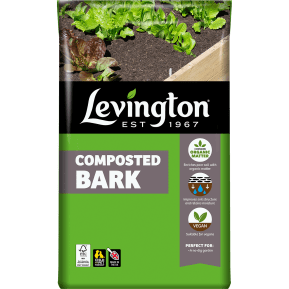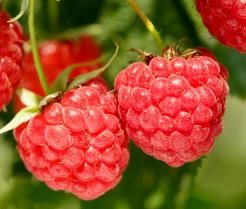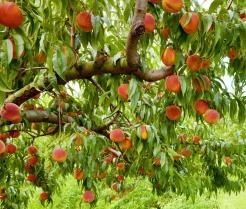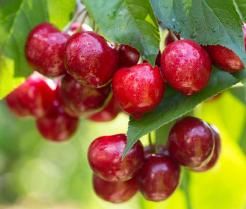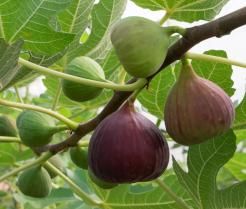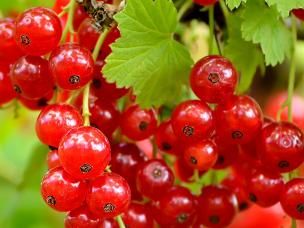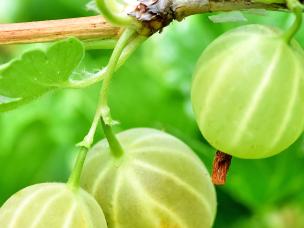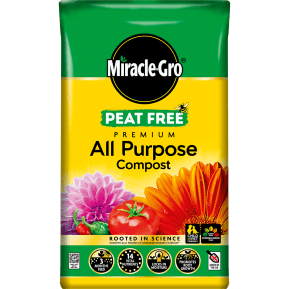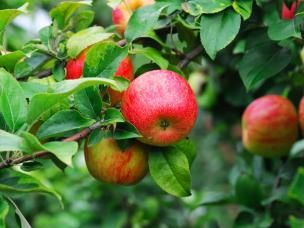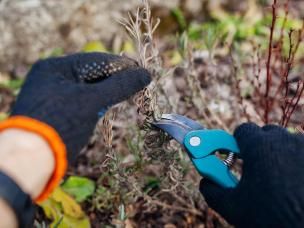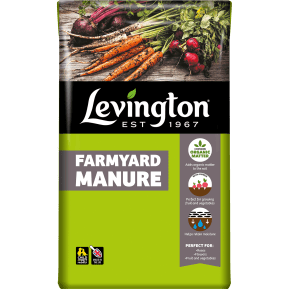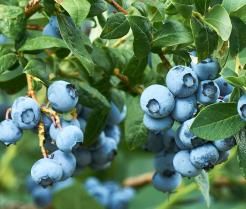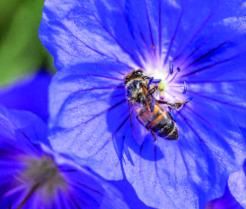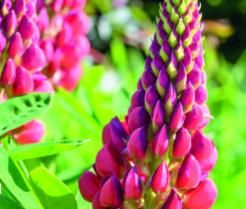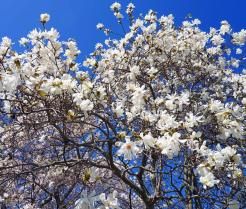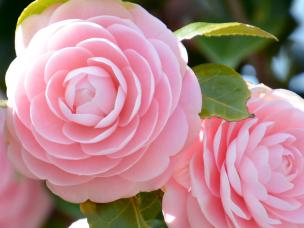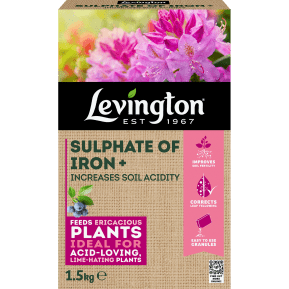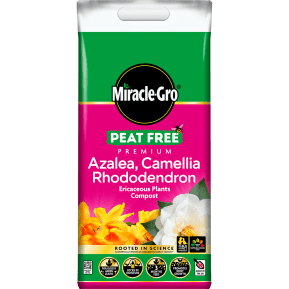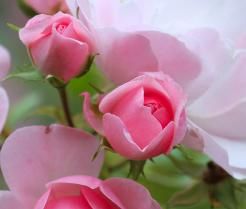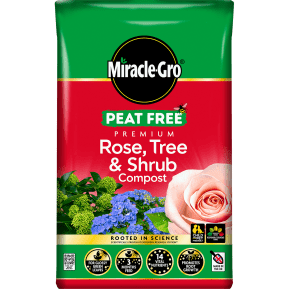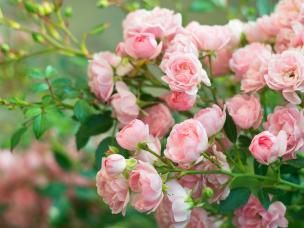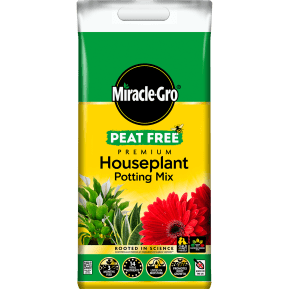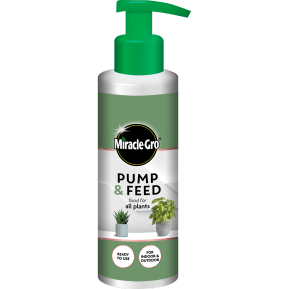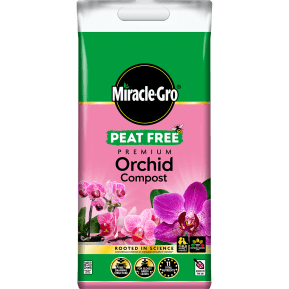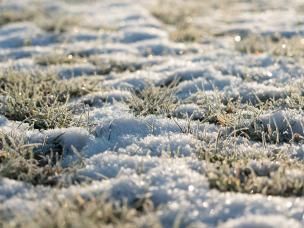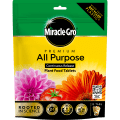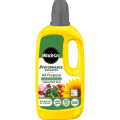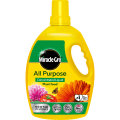December Gardening: Your Monthly Garden Guide
Short days and minimal sunlight hours can make December feel like a dark and uninviting month. Most parts of the country will see frosts and snow, and many established plants will be dormant, meaning they won’t grow or flower. If you’re wondering what to plant in December, then you may be surprised by the number of options, as it’s an ideal time of year to plant and maintain roses, perennials and shrubs. You can also make the most of any pruning you do by turning your garden cuttings into seasonal decorations.
What to grow in December and other December gardening tips
After a busy year in the garden, you can turn some of your attention inside and start decorating your house with seasonal plants. December gardening is less about long days outside and more about enjoying looking after your indoor plants, and spending time in the kitchen where your efforts from earlier in the year will continue to provide a steady supply of homegrown vegetables. To find out what to grow in December, or how to maintain your existing plants, fruit and veg, choose from the December gardening guides below.
December is a surprisingly busy time in the fruit and vegetable garden. Your brassicas will need a bit of extra attention this month and you’ll find plenty of veggies to harvest, which is just as well if you’re planning to host any large seasonal dinners! Over in the fruit patch, it’s the ideal time of year to plant fruit trees and bushes, so make sure you keep an eye out for some good deals.
Vegetables
If you’re wondering what vegetables to grow in December, then there are a few you can plant out in the vegetable garden, but it’s generally a good time of year to focus on growing some seeds indoors. If you can’t quite keep away from your vegetable patch, then don’t worry – there’s plenty of maintenance to be done when it comes to your brassicas.
What vegetables to plant in December
If you’re looking to get a last-minute crop of seeds and bulbs into the earth before the new year arrives, then you can still just about get some broad beans and garlic in the ground. Your kitchen windowsill may provide a more fertile bed for growing veggies at this time of year, though. The following can all be sprouted on the kitchen windowsill in a jar:
- Aduki beans
- Alfalfa
- Chickpeas
- Fenugreek
- Lentils
- Mung beans
- Radish
Check the instructions on individual seed packets and use a purpose-built seed sprouter to keep them fresh. The sprouted seeds can be added to salads as a great source of protein. You can also try growing lettuce, herbs and cress on a windowsill.
For best results, plant your seeds in a mixture of soil and an organic, peat-free compost. Ensure the compost lines the bottom of the container to encourage strong root growth. If you’re short on space, you can even consider planting your beans in a grow bag.
Vegetable plant maintenance in December
There are just a few small jobs to do in the vegetable patch in December. Most of these are concerned with the brassica family of plants such as broccoli, Brussels sprouts, cabbage, cauliflowers, kale, swede, and turnips.
Firstly, check that all of your plants are firmly in the ground. Any plants that can be easily moved around – Brussels sprouts in particular – will often have a shortened lifespan, so gently firm the soil around the plant if you find any looseness. While you’re doing this, you should also check your plants for yellowing leaves. Remove them to prevent any diseases from spreading.
If you have any netting covering your vegetables, check that it’s secure enough to prevent hungry birds from damaging the plants. The netting should be held up with supports that clear the tops of the plants so that birds are unable to perch on them or peck through the netting.
Finally, if you’re overwintering rhubarb, now is a good time to divide it to produce stronger plants, and more of them.
What vegetables to harvest in December
December is the month for roast dinner feasts so it’s just as well that the following vegetables will be cropping in your garden vegetable patch:
Once you’ve harvested your veg, consider mulching your veggie patch with a peat-free composted bark. This will help to improve your soil quality and lock in moisture for your next crop of produce.
Recommendation: If very cold weather is forecast, cover or harvest any vegetables you need to see you through the icy snap while you can still get a garden fork into the ground.
Fruit
Can you plant fruit trees in December? Absolutely! In fact, it’s the ideal time of year to plant them. Make sure you carefully inspect the health of any trees before buying them and prepare the ground with a mulch. Elsewhere in your fruit garden, December is also the month to get on top of your pruning, so don’t put those garden tools away for winter just yet.
What Fruit to plant in December
Fruit trees and bushes can be bought all year round, but bare-root plants are intended for planting when the plant is dormant - in winter. So, December is the perfect time to plant any of the following:
These fruit trees and bushes can all be planted in December:
Don’t forget to mulch the earth with soil improvers before planting your trees. Use a naturally-derived peat-free compost and ensure that you backfill the hole deep enough with compost for the roots to have something to grow into.
Recommendation: When buying canes of soft fruit, gently scratch the cane - it should be green under the bark – and make sure that the roots can be evenly spread.
Growing Fruit in December
December can be a surprisingly busy time in the fruit garden. The following plants are dormant throughout winter, and so should be pruned:
- Apples
- Blackcurrants
- Grapes
- Mulberries
- Pears
Remove any branches that are touching each other, are dead or are showing signs of disease. Freestanding apple and pear trees should be pruned to encourage good airflow through the branches.
Check that fruit ties are attached to supports, but not too tight. As the plant grows, it’s easy to forget that the ties could cut into and damage the plant. Loosen and retie these if needed. If you have any blueberries, remove any branches that are dead, showing signs of disease, or are running against other branches.
You should also take this time to mulch your existing fruit plants with a peat-free compost or well-rotted manure. You can prepare the ground for new fruit trees by digging it over and adding the same compost or manure.
A bigger project you could tackle in the fruit patch is to construct a fruit cage for smaller plants, which will protect soft fruit from damage by birds. Use wooden stakes and upturned plant pots, and pin or weigh down the edges of netting so that birds can’t get in. Alternatively, if you have space, a walk-in fruit cage made from rigid mesh will allow you to access the fruit without needing to adjust the netting each time.
December might not seem like the most intuitive time of year to be getting out in the garden and nurturing new growth but, provided the weather conditions are agreeable, it’s actually an ideal month for planting new roses and ericaceous plants. It’s also a good opportunity to treat your plants and shrubs to some much-needed pruning as they’ll likely be dormant at this time of year. Don’t forget that you can use the off-cuts as seasonal decorations.
Plants and shrubs
If you’re wondering what plants to plant in December, then it’s the ideal time of year to plant some bare-root shrubs, ericaceous plants, or even sow perennial seeds. Aside from some light pruning (which you should take the opportunity to do while your plants are dormant) there’s not a huge amount of maintenance to keep on top of in December – just make sure to clear any heavy snowfall.
What plants and shrubs to plant in December
You may have spotted some of these stunning plants during a winter walk. If you want to grow them yourself, now is the perfect time to plant any of the following bare roots in your garden:
- Cornus (dogwoods)
- Hamamelis (witch hazel)
- Ilex aquifolium (common holly)
- Hamamelis (witch hazel)
- Hardy geraniums
- Sarcococca confusa (Christmas box)
There are also a lot of perennials that can be grown from seed sown in December:
- Clematis
- Delphinium
- Foxgloves
- Japanese maples
- Lupins
Unlike many flora, ericaceous plants can be planted year-round provided the ground isn’t frozen, so December may be a good time to get them in the ground while there’s not much happening in the rest of your garden. Remember to check the pH levels of the soil first – some ericaceous plants will not survive in alkaline soils – and take the opportunity to monitor any existing plants for signs of disease or overcrowding. The following are all good options to plant in December:
- Blueberries
- Hamamelis (witch hazel)
- Heathers
- Hydrangea
- Magnolias
- Pieris japonica
- Rhododendrons
If you’re not sure what the pH level of your soil is, kits for testing this are widely available. A pH test should confirm that your soil has a pH level of 7 or below, and ideally as low as 5.5, to be suitable for ericaceous plants. If you need to lower the pH level of your soil, add sulphate of iron.
It’s easiest to control the acidity of soil by growing smaller plants in containers. Water them well and then mulch all newly planted ericaceous plants, whether in the ground or in containers. Use a specially formulated peat-free ericaceous compost, leaf mould, wood chip, or even pine bark to provide a good source of acidity for your plants.
Growing plants and shrubs in December
Many of your perennials will be dormant in December and not actively growing, so now is a good time to prune them. Cut back the new growth (which can be sensitive to winter conditions) taking the stems right back to the base. The following can all be pruned in December:
- Acers
- Berberis
- Birch
- Clematis (Group 3 varieties)
- Cotinus
- Hardy Geraniums
- Hedera helix (Ivy)
Heathers should be sheared back to remove old flowers and encourage new, bushy growth, while any herbaceous shrubs that have died back but left unsightly brown foliage can be tidied up.
Some of your plant clippings are ideal for using around the home at this time of year. You can use them to create seasonal decorations, such as wreaths and table decorations, or to garnish wrapped gifts for friends and family. You can also take small pieces of material from other plants, such as holly, to add a festive feel to the home – just check that any berries or thorns are out of reach of animals and children.
Once you’ve finished the pruning, you can mulch your border with a peat-free compost. If particularly cold weather is forecast throughout December, make sure you wrap your plants with fleece or hessian for a bit of added protection. Any ericaceous plants in containers can be re-potted if needed using a specialist peat-free compost which contains a suitable mix of nutrients.
While it’s most likely to occur in summer, it’s not uncommon for rhododendrons and azaleas to develop leaf spot in winter. This is a fungal disease which produces spots on leaves, which may then drop from the plant. Destroy the leaves, and make sure that the plant is well watered and fed.
Roses
If you’ve been asking yourself, ‘can I plant roses in December?’, then the answer will depend upon just how cold it is. If we’re having a particularly mild winter and the ground isn’t too cold, then it can be an ideal time to plant bare-root roses. December is also an opportune month to prune both your climbing and rambling roses, so make sure you haven’t put your pruning saw and secateurs away for winter yet.
What roses to plant in December
There are plenty of bare-root roses that can be planted now, as long as the ground is not too cold. When deciding where to site a new rose, consider:
- Sunlight: Most roses like full sun, although some will tolerate partial shade – consider how the sun’s reach in your garden might change across the year.
- Drainage: Roses need moist but well-drained soil.
- Support: Taller and trained roses will need support such as a wall or trellis to grow against.
- Space: Some roses are suited to containers, while others will need a large area to spread into – make sure you know how much space your rose needs before you purchase it.
When planting your rose bushes, make sure you backfill the hole with a mixture of soil and a peat-free compost specifically designed to encourage roses to put down fast roots.
Growing roses in December
December is the ideal time to prune roses that were planted earlier in the year. Remove any dead or damaged branches of climbing and rambling roses, as well as any branches that are overlapping or rubbing against each other.
You should cut back any side shoots of your climbing roses by about a third. Cut them back to four buds, making sure that the bud nearest the tip of the shoot points in the same direction that you’d like the new growth to develop.
Removing any old branches will improve the plant’s circulation. Check that any ties or supports are not cutting into the branches – remove them if they are and replace them with new ones. As long as the rose is healthy and is not showing any signs of disease, you can add the prunings to the compost heap. You may want to cut larger pieces into smaller sections to speed up the composting process.
If you have any rambling roses that have become overgrown and untidy, remove all but five or six young stems and prune the rest of the rose to the ground. You can then shorten the side shoots on the remaining branches by about a third. Rambling roses that are in good shape and condition can be left for a summer prune.
Once you’ve finished pruning your roses, tie any loose stems so that the plants are not damaged in strong winds. This can be done for both climbing and rambling roses.
If you’re wondering what to grow in December to help bring some seasonal greenery into your home, there are plenty of houseplants suitable for potting this month and the great thing is that different varieties thrive in different conditions. That means you’ll likely find something for every room in your house, whether it’s a dark corridor, a light sitting room, or a humid bathroom.
What houseplants to plant in December
Growing plants indoors means we can be gardening all-year round. There are so many different houseplants to choose from that it’s easy to find one that suits the space and environment you have available. That means that there are lots of houseplants to plant in December – just make sure you have a frost-free room available where the temperature is usually 18°C or cooler.
The following plants are ideal for rooms with good levels of light:
- Chlorophytum (Spider plant)
- Ficus elastica (Rubber plant)
- Gerbera
- Pelargonium
- Streptocarpus (Cape primrose)
Where light levels are slightly poorer, you could consider any of the following:
- Aspidistra
- Crassula Ovata (Jade Plant)
- Fatsia
- Hedera (Ivy)
- Monstera (Swiss cheese plant)
Make sure you check the needs of each individual variety to understand exactly what environment it requires to thrive.
When potting your plants, use a peat-free compost specially formulated to encourage strong root growth in houseplants, and offer moisture control as well as feed for up to three months.
Did you know that the UK disposes of approximately eight million real Christmas trees each year? Instead of bringing a temporary tree into your home, consider a more sustainable alternative to gather your presents beneath. Areca palms or weeping figs are both good options.
Growing houseplants in December
Every houseplant has slightly different needs, but all indoor plants require:
- Watering: Generally, only water them when the top third of the soil is dry. Remember that plants will dry out more easily when the central heating is on over the winter.
- Feeding: Provide essential nutrients to the plant by applying a naturally derived houseplant food. Orchids have more specific feeding requirements which vary from species to species but can generally benefit from regular misting and being grown in a specially formulated orchid compost.
- Pruning: Deadhead any foliage or flowers that have become brown and crispy.
Clean the leaves of your plant to remove dust, which can stop the plant growing strongly. You can do this with a cloth, or by putting the plant under the shower and gently washing it with cool water.
Finally, repot your plants as needed, using a peat-free compost specially formulated for houseplants.
Lawn care in December is quite possibly as easy as it gets with very little that needs doing at all. Leave your grass to do its thing and enjoy any snowy carpets that may materialise!
December lawn care
December is the month to take a break from your lawn care. In fact, it’s probably a good idea to stay off of your lawn as far as possible, because walking on grass that is frozen by frost or snow can cause permanent damage.
Instead, take the opportunity to service your lawn care equipment. Give your lawnmowers and gardening equipment a clean, and make sure all blades are sharp and dry before storing them for the winter.
